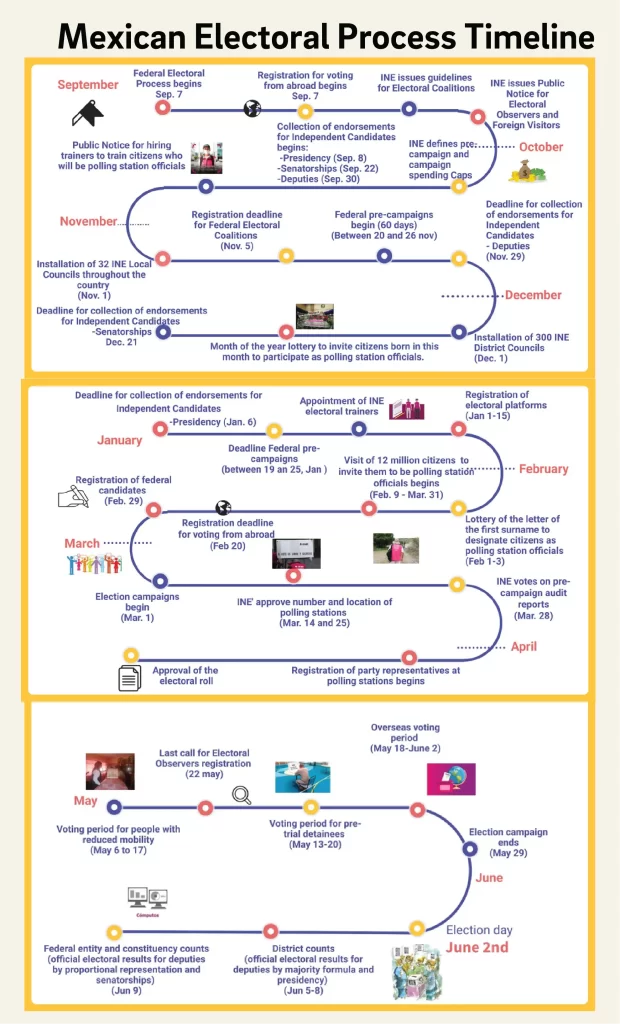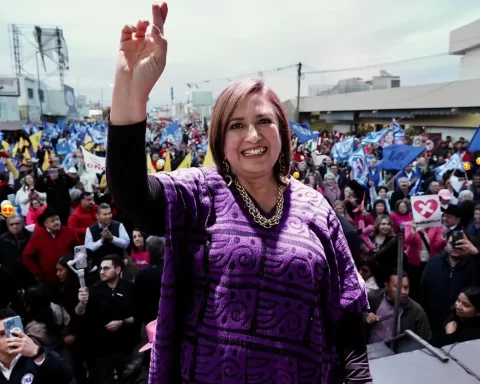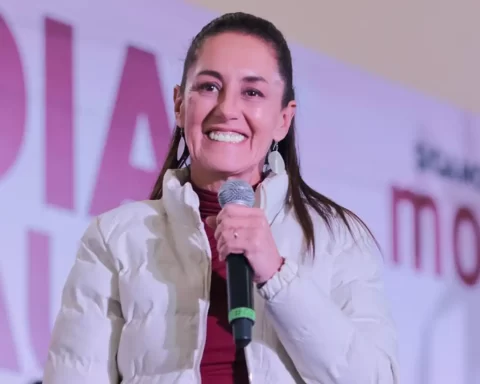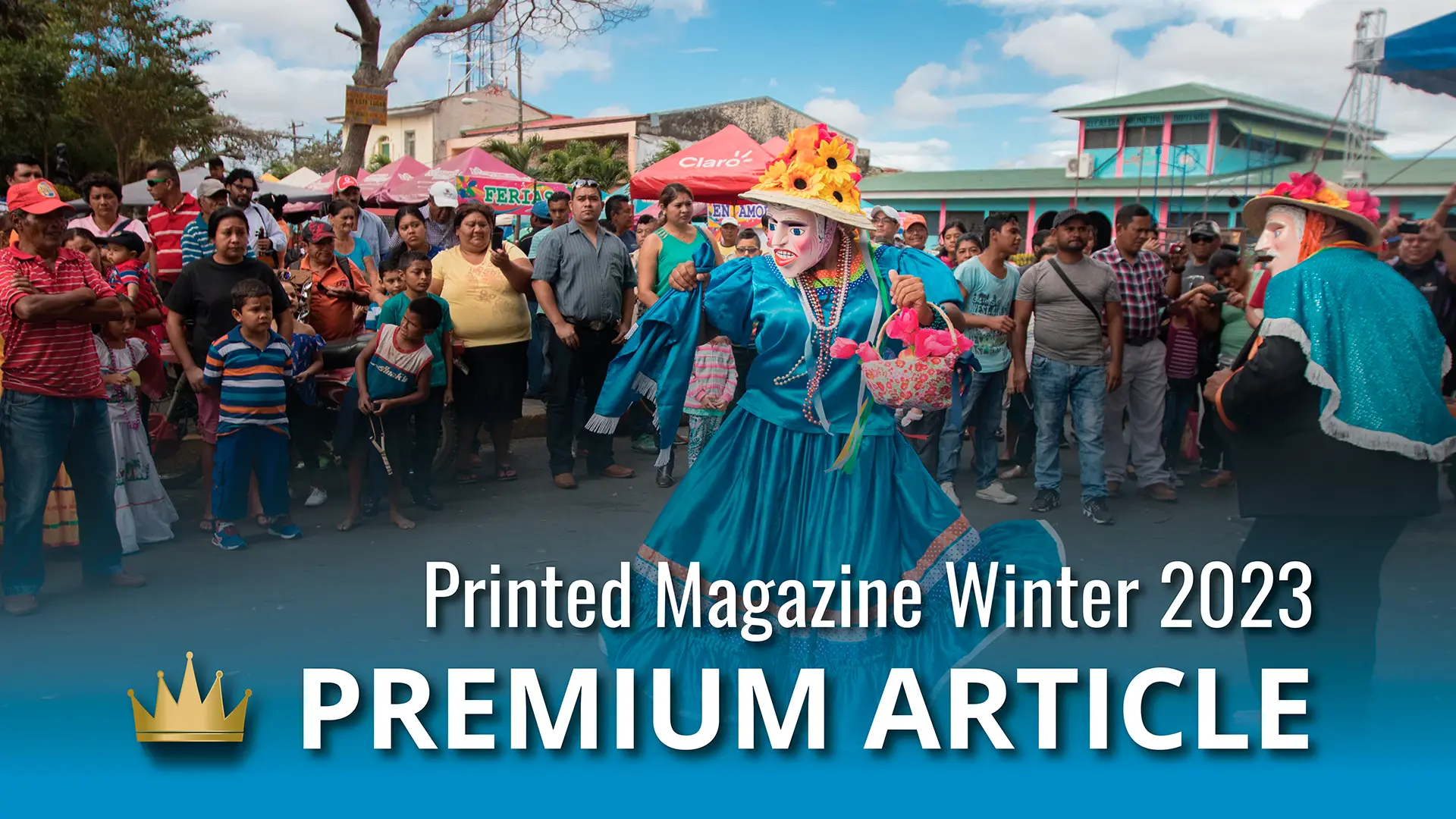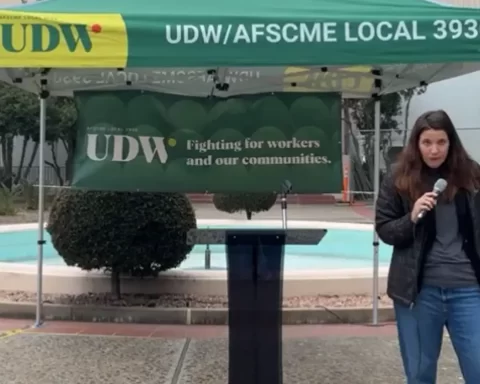By UC San Diego. School of Global Policy and Strategy. Center for U.S. – Mexican Studies.
On June 2, 2024, Mexico’s citizens will be called to the polls. We offer readers in this first issue a timeline with the most relevant steps in the preparation of the election and up to Election Day, as well as in the publication of final results where the votes cast throughout the country will be added up.
What is at stake?
This will be the biggest election in history, both in terms of the electoral roll – since almost 100 million people will be able to vote as well as a large number of positions up for grabs: the presidency of the Republic will be at stake and Congress will be entirely renewed (500 deputies and 128 senatorships).
In total, 20,375 electoral positions will be defined to reconfigure the political map and balances of power in Mexico.

Who organizes the elections?
The Mexican electoral system has specific features that can be explained by the country’s political history. The distrust towards the integrity of elections made it necessary to design a vast legislation, with a high degree of detail and regulatory procedures and stages. At the same time, stemming from the Constitution, it was necessary to create autonomous electoral authorities, independent from political parties.
The National Electoral Institute (INE) is the central authority in the organization of elections. Among other constitutional responsibilities, INE oversees validating and updating the electoral roll and the general catalog of voters, of installing polling stations nationwide, of managing the access of political parties and candidates to radio and television airtime, of overseeing the income and expenses of pre-campaigns and campaigns and of issuing preliminary and final results of federal elections.
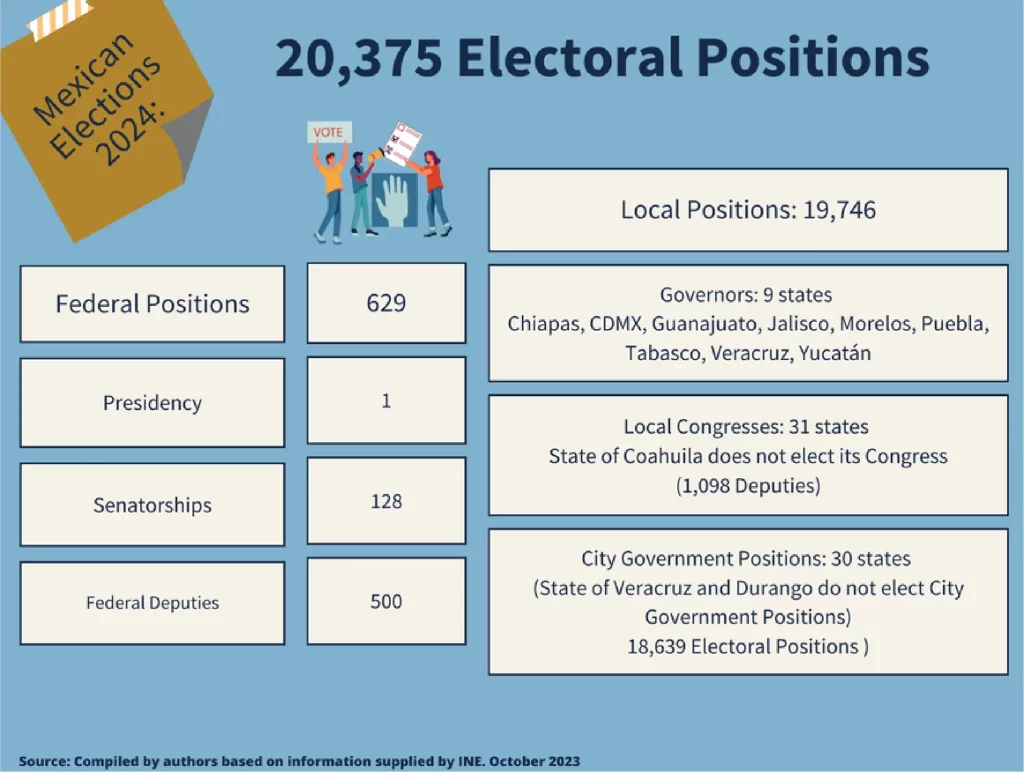
The state-level electoral authorities – the Organismos Públicos Locales (OPLs) – are responsible for registering candidates in the states and of issuing the results for city council elections, local deputies and governorships.
When did the federal electoral process begin and what’s next?
The federal electoral process that began in September 2023 has a series of stages and procedures that must be complied with rigorously until the date of the elections and, thereafter, with the counting of the votes.
In the following weeks, INE will have to install its 32 local councils throughout the country, one per state, as well as the 300 district councils where fundamental decisions will be made, such as the appointment of Assistant Electoral Trainers (CAEs) and Electoral Supervisors (SE) in charge of training the citizens who will install the 170,000 polling stations all around the country. This work will imply that INE will visit more than 12 million citizens in their homes, summoning them to become polling station officials.
With regard to political actors, the registration of electoral coalitions will take place in the next few weeks, together with pre-campaigns at federal and local levels. In addition, independent candidates will canvass countrywide to find support for their candidacies. INE will monitor, supervise and sanction both the pre-campaigns and independent candidates’ electoral canvassing.
For more information visit the page: https://usmex.ucsd.edu/media-center/democratic-integrity-mexico-2024.html#Issue-No.-1:-October-2023
